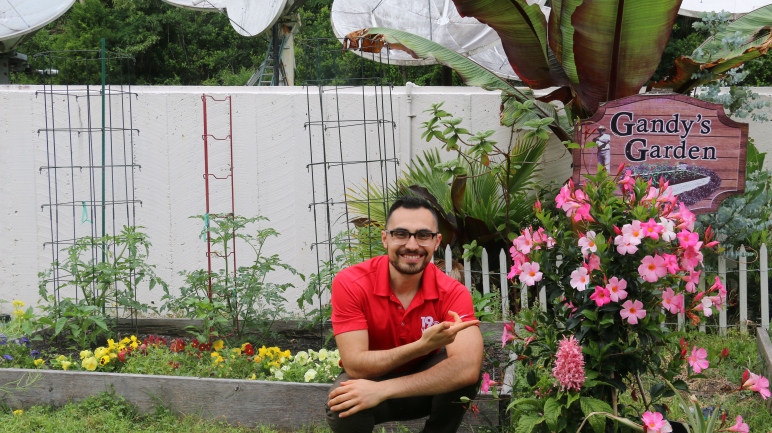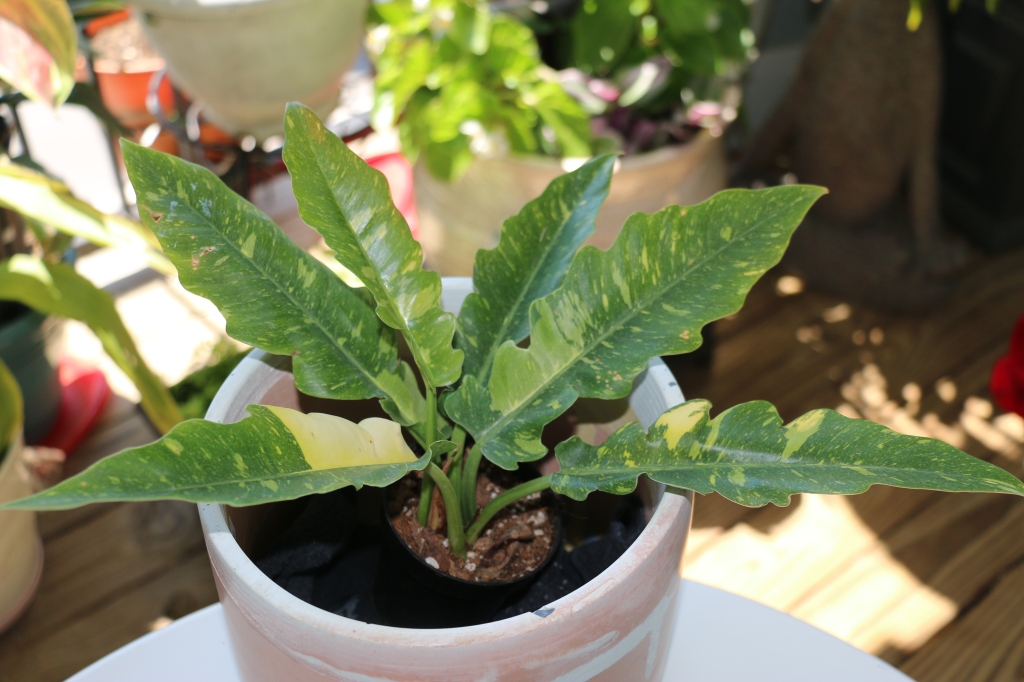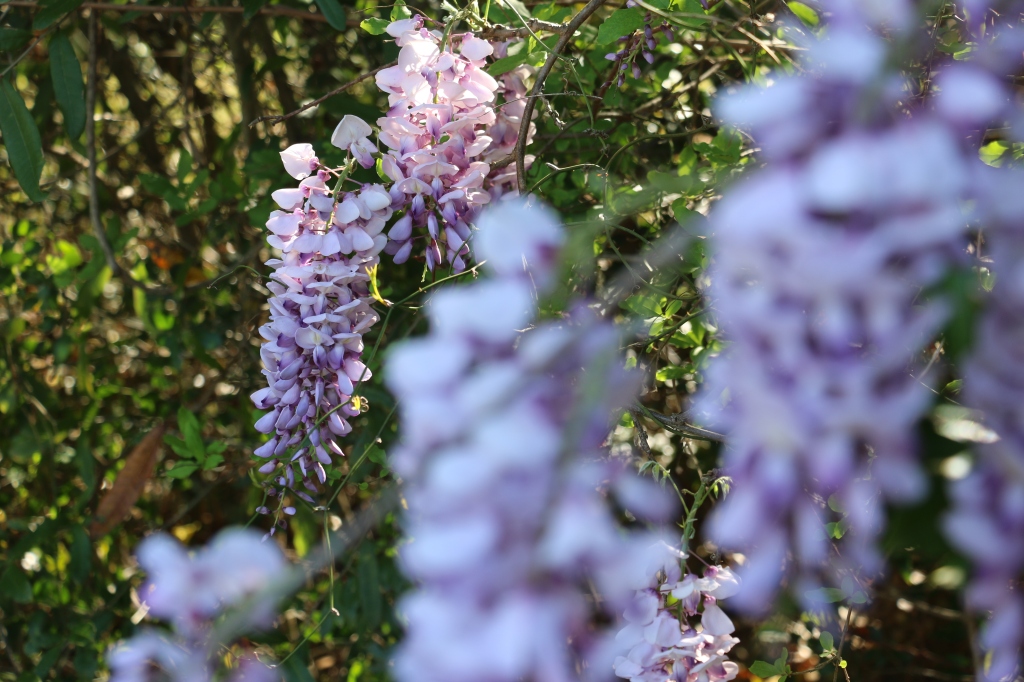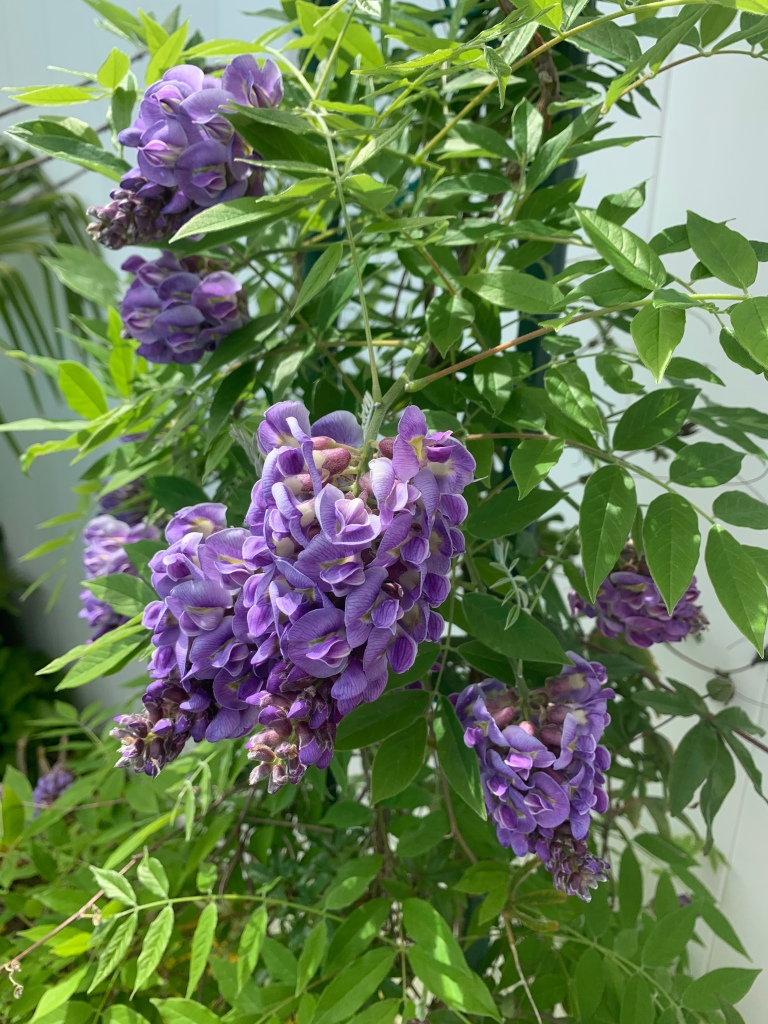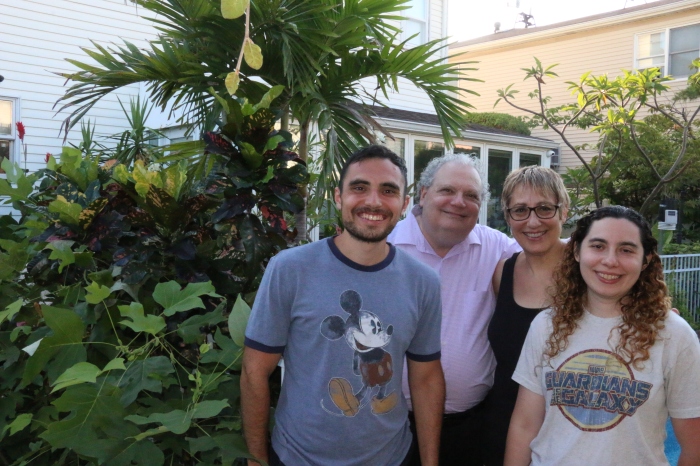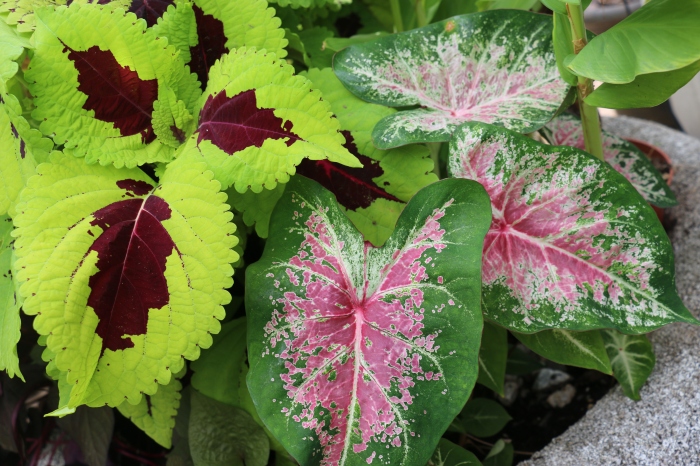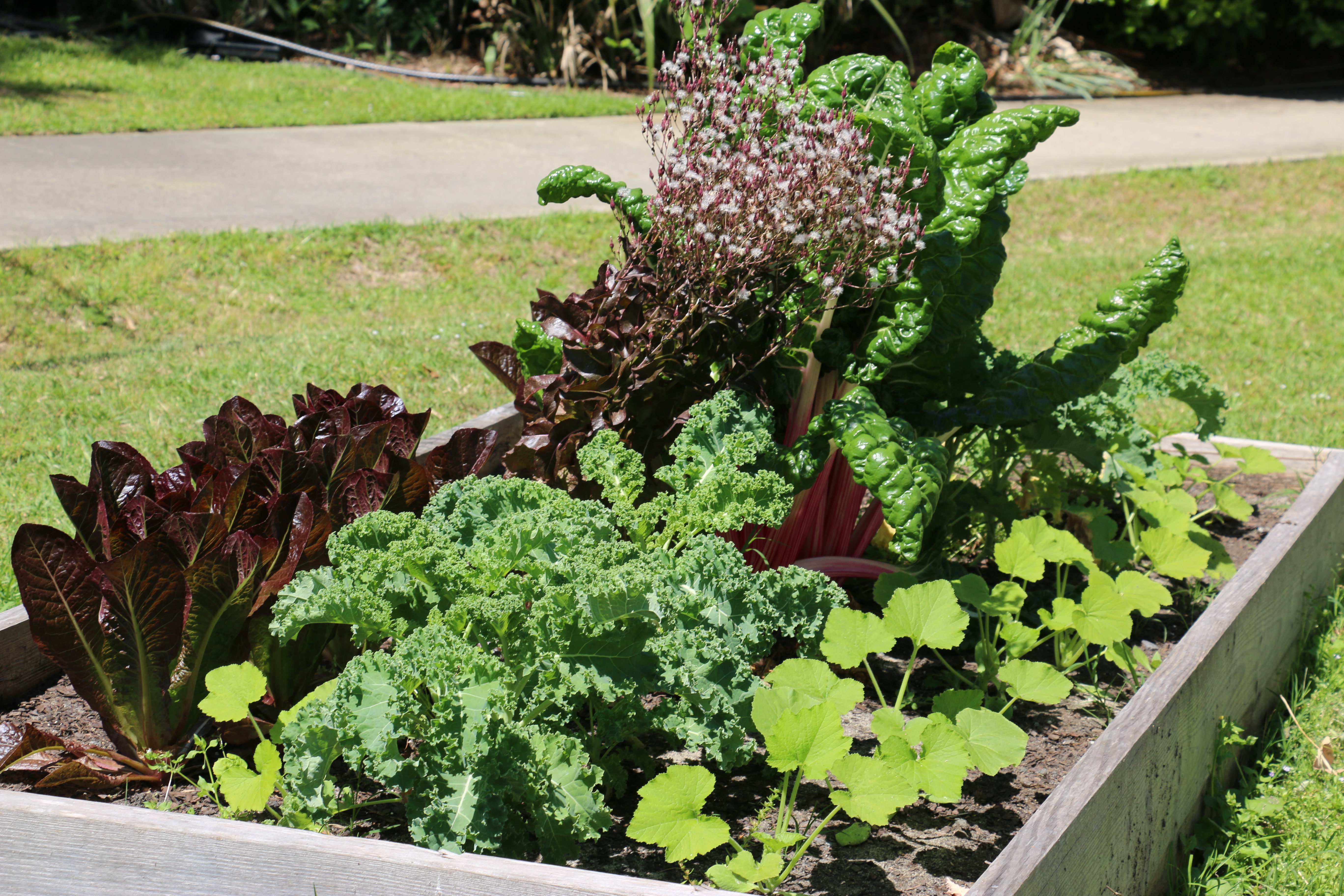May is one of my favorite months in the garden. Temperatures are warm enough for quick growth, but cool enough to limit plant stress. (Also, the weather is bearable for yard work!) Typically May in Columbia, SC is quite hot, but the first half of May 2021 has been much cooler than average. The average afternoon high through May 15 was only 79F this year (the climatological average is about 82F), and morning temperatures were about 4 degrees cooler than the climatological average. The “Famously Hot” city will live up to its name for the last week of May, but here’s a look at how the garden is responding to spring so far.

Bush & Pole Beans
I started these plants from seed in early April. Beans are a great garden project to start with kids because of the large size of the seeds and quick germination rates. The bush beans just started flowering (that’s about 6 weeks after the seeds were planted). I expect they would have bloomed even faster if the weather was warmer at the start of this month. Bush beans are shorter growing and shorter lived than pole beans which are vining and require a trellis. It’s interesting the pole beans are growing slower than the bush beans so far. I will start more bush bean seeds in mid summer when the current plants begin to wind down.

Cardoon
Last September I planted two Cardoon plant seedlings for the winter garden. These plants have gorgeous silver leaves that get bigger and better with age! Cardoon is an artichoke relative, but they’re grown for their edible foliage. However, edible is a relative thing. I learned it’s quite bitter. Cardoon plants stay pretty all winter as long as temperatures stay above 15F (which is the case for most of our winters). As the weather warms up, these plants will leap into flower mode producing artichoke-looking flower buds. Maybe next year I will try an artichoke plant, which are grown for their edible flower buds. Artichokes are tough to grow in the southeastern US because the buds often erupt into flowers before they’re ready to pick because of our extreme heat.

Watermelon
I was gifted a few watermelon seeds from a fellow meteorologist, Mark Holley. The mother plant grew a 170 lb fruit – talk about big shoes (or rather fruit) to fill! I planted the seeds one month ago in mid-April and they are really starting to pick up speed. Watermelon prefer hot temperatures and kind of crawl when spring is cool like it’s been this year. That’s why I believe watermelon seeds can be started as late as May or even June in the south, although it’s better to start early. Watermelon take about 3 months after sprouting to begin producing fruit, so plants started from seed in April should have their first ripe fruits in July in my experience.
Malabar Spinach.
I am very excited to try this new plant for the first time! I actually got these seedlings from a nursery by my parents house in New York in late April. I brought it back down to South Carolina with me on the plane. (Pro-tip, most airlines will allow you to carry small plants on the plane if it’s a domestic flight!). Malabar Spinach is a vine that loves hot weather and can be eaten just like your typical spinach leaf. Clearly it’s not related to the common spinach (Spinacia oleracea), which is short growing and loves cool and short days. Malabar spinach needs a big space. I actually had to purchase a trellis for it.

Cucumbers
This is actually the first year I’m growing cucumbers in my adult life, but funny enough, it was one of the only things growing in Gandy’s Garden when I started at WLTX in 2019. The garden was left to the weeds after Jim Gandy retired so there was absolutely no supplemental watering or care going on. However in the middle of the grass was a surviving cucumber plant from last year (maybe even the year before). Pretty impressive if you’ve ever had the pleasure of spending a hot summer in the South Carolina Midlands. It’s clear cucumbers are pretty easy to grow! You just need plenty of space. This year I opened up part of the lawn to an in-ground garden and cucumbers were the first thing to come to mind for the spot. I started these cucumber seeds in late March and they started flowering about 6 weeks after sprouting. I will have them climb up a trellis as they grow.

Tomatoes
I learned a lot about tomatoes in 2020 and feel confident in my selections for this upcoming summer. “Sweet Million” was the biggest producer last season, and I am excited to have them back in the 2021 garden. I started them from seedlings in Mid April. I’m also growing Midnight Snack, which is another cherry type of tomato. Park Whopper Improved and Rutgers Tomatoes are both larger fruiting varieties. The Rutgers tomato is a “determinate” variety which requires less support to grow and great in pots. Determinate tomatoes are generally a heavier producer early in the season, but it will not fruit continuously like indeterminate varieties. Indeterminate tomatoes grow and fruit continuously if the right weather requirements are met.

Peppers
I never grew peppers from seed before until this year, and by the way, it was an accident! A few banana peppers are coming back from the fruit I left on the ground by last year’s plants. Amazingly, these volunteers are now almost as tall as the seedlings purchased from the store. I decided to throw a few pepper seeds in pots on my porch in my apartment from the fruit at the supermarket and those are also sprouting. The bell peppers, Carolina reaper, and “Fooled You” peppers were planted in mid April as seedlings. There’s a little something for every pepper lover this year because Carolina Reaper are one of the hottest peppers in the world and “Fooled You” has a Jalapeno taste but none of the heat.

Eggplant:
The White Casper Eggplant I started from seeds inside my house in late February, are beginning to flower. I’m really happy with their progress over the past few months. The eggplant seedlings I purchased from a local nursery in April were originally taller than my seed started eggplants, but the seed started eggplants have surpassed them in size and vigor. They’re different varieties, so I am not saying seed starting eggplant is going to result in plants that are healthier than from the store, but they’re certainly holding their own! It takes about 3 months for eggplant to begin flowering after sprouting and another month for fruit to ripen so eggplant fruits should be ready in late June from the white eggplant.

Winter Plants
The cool weather so far this season has been very beneficial for plants left over from the winter garden. I planted Kale and Romaine Lettuce seedlings in March they’re still alive and producing healthy foliage. The cilantro and parsley I planted last September are well past their prime and are now setting seed. The snow peas have grown vigorously this spring and are producing new pods each day. I started the snow peas from seed in October and they sat in the garden until the weather started to warm up in February. I don’t think it made a huge difference to start these in the Fall because they grew just as well last year when I started the seeds in the ground in early February.
There is so much more I could talk about, but I will save some of the conversation for another blog post! In the meantime, be sure to check out my social media for more updates and of course WLTX every weekday morning!
